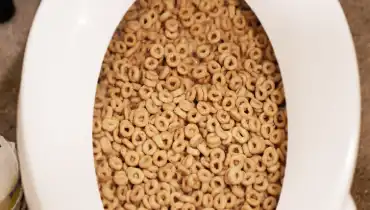Just how do you really feel in regards to Is it safe to flush food (especially rice) down the toilet??

Introduction
Many people are typically confronted with the dilemma of what to do with food waste, especially when it involves leftovers or scraps. One common concern that arises is whether it's all right to flush food down the bathroom. In this article, we'll look into the reasons individuals may consider flushing food, the effects of doing so, and alternative approaches for proper disposal.
Reasons individuals might take into consideration purging food
Lack of understanding
Some individuals might not recognize the potential damage brought on by purging food down the toilet. They might incorrectly think that it's a safe technique.
Convenience
Flushing food down the bathroom might feel like a fast and very easy solution to throwing away unwanted scraps, especially when there's no close-by garbage can available.
Laziness
Sometimes, individuals might merely select to flush food out of large idleness, without thinking about the repercussions of their activities.
Repercussions of flushing food down the toilet
Environmental influence
Food waste that ends up in waterways can add to contamination and harm marine ecosystems. In addition, the water utilized to purge food can strain water sources.
Plumbing concerns
Flushing food can bring about blocked pipelines and drains, triggering pricey pipes repair work and aggravations.
Types of food that must not be purged
Fibrous foods
Foods with fibrous structures such as celery or corn husks can obtain entangled in pipes and create obstructions.
Starchy foods
Starchy foods like pasta and rice can absorb water and swell, resulting in clogs in pipes.
Oils and fats
Greasy foods like bacon or cooking oils ought to never ever be flushed down the bathroom as they can strengthen and trigger obstructions.
Appropriate disposal techniques for food waste
Utilizing a waste disposal unit
For homes furnished with waste disposal unit, food scraps can be ground up and purged with the plumbing system. However, not all foods are suitable for disposal in this fashion.
Recycling
Specific food packaging materials can be reused, decreasing waste and minimizing ecological effect.
Composting
Composting is an environment-friendly way to take care of food waste. Organic materials can be composted and used to improve soil for horticulture.
The importance of appropriate waste management
Minimizing ecological damage
Correct waste monitoring practices, such as composting and recycling, assistance decrease air pollution and protect natural deposits for future generations.
Securing pipes systems
By preventing the technique of flushing food down the bathroom, homeowners can stop costly plumbing repair services and maintain the stability of their pipes systems.
Conclusion
To conclude, while it might be tempting to flush food down the commode for convenience, it is very important to understand the potential effects of this action. By adopting appropriate waste administration techniques and getting rid of food waste sensibly, people can add to much healthier pipes systems and a cleaner setting for all.
FLUSH FOOD DOWN THE TOILET?
FLUSHING FOOD CAN CAUSE BLOCKED DRAINS IN YOUR HOME
All of the plumbing fixtures in your home are connected to the same sewer pipe outside of your home. This outdoor sewer pipe is responsible for transporting all the wastewater from your home to the Council sewer mains. Even small pieces of food that go down the kitchen sink can cause problems for your sewer. It should therefore be obvious that flushing larger bits of food, such as meat, risks a clog in either the toilet itself or the sewer pipes. Flushing greasy food is even more problematic because oil coagulates when it cools, coating the interior lining of your pipes.
THE TOILET IS NOT A BIN
Food isn’t the only thing that people shouldn’t be flushing down the toilet. People use the toilet to dispose of all kinds of things such as tampons, makeup wipes, dental floss, kitty litter and even underwear. Water goes to great lengths to educate residents about the high costs and stress placed on wastewater treatment systems simply from people flushing the wrong stuff down the toilet. It costs taxpayers millions of dollars each year, and homeowners thousands in blocked drain repairs.
FLUSHING FOOD IS A WASTE OF WATER
Flushing food is a waste of our most precious resource - water. In June this year Level 1 water restrictions were introduced to protect water supply from drought conditions. Much of New South Wales continues to be affected by prolonged drought with recent figures revealing up to 97 per cent of the state remains in drought. Depending on whether you have a single or dual flush toilet, every single flush uses between five and 11 litres of water. In the current climate this is a huge amount of water to be wasting on flushing food that should be placed in the bin (or better yet, the compost).
https://www.jabplumbingsolutions.com.au/blog/can-you-flush-food-down-the-toilet

As a serious reader on Flushing Food Down the Toilet?, I assumed sharing that post was worthwhile. Do you know about anybody else who is occupied with the topic? Do not hesitate to promote it. I value reading our article about Flushing Food Down the Toilet?.
At This Website